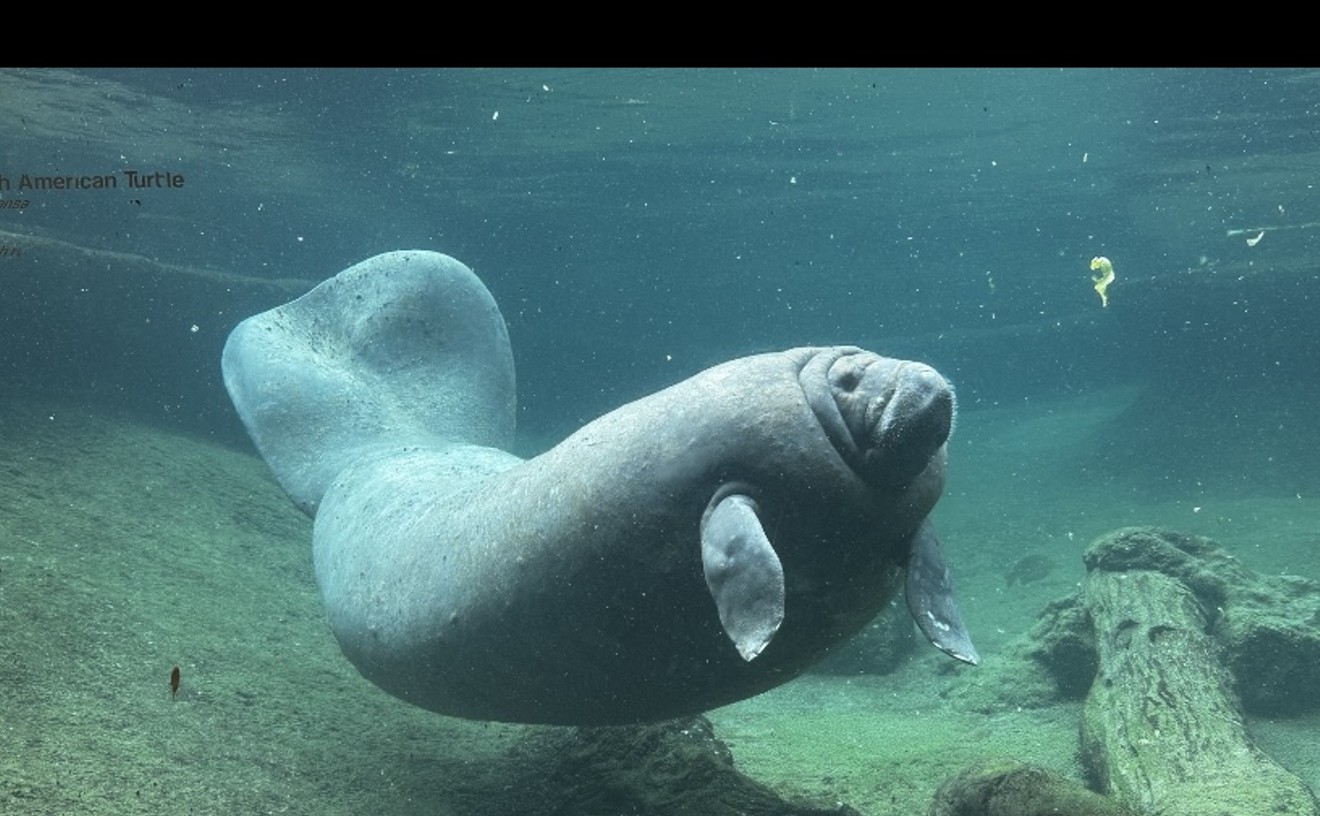The project won't be complete for nearly three years.
Homeowners are furious at the county's anti-pedestrian initiative, which was taken in response to the May 30 collapse into the Intracoastal of a 150-foot portion of sidewalk and concrete railing -- along with more than a dozen fishermen, none of whom were seriously hurt -- on the drawbridge nearest the causeway's western terminus, just north of the offices of the Miami Herald.
"It's a dumb move, a waste of taxpayers' money, ugly, unnecessary -- and it's not going to keep people off there," scoffs Jack H. Jackson, president of the Venetian Isle Condominum Association. Jackson argues that the measure poses a dire hazard to pedestrians who are persisting in using the roadway, because it moves them closer to automobile traffic. He and other critics also contend that the ban on foot traffic (soon to be reinforced by a sign that reads SIDEWALK CLOSED -- NO PEDESTRIANS OR SKATERS ON BRIDGES) represents an absurd attempt to bar all pedestrians instead of simply putting an end to the practice of fishing off the causeway, a time-honored ritual despite being outlawed by FDOT. "It's a gross overreaction, a draconian remedy," adds Victor Diaz, president of the Venetian Causeway Neighborhood Alliance. "It's the fishermen that caused the railing to fall in the water in the first place."
Modesto Nunez, assistant director of construction and maintenance for the public works department, says the county had no choice. In early June County Manager Armando Vidal notified Metro commissioners that consultants had found sections of the sidewalk and pavement near the bridges to be "severely deteriorated." Utility lines run along the underside of the bridge directly beneath the sidewalks, further adding to the stress, the county manager pointed out. "The area is weak and it doesn't take people standing there," Nunez asserts, disputing the notion that the May bridge collapse was due entirely to fishermen.
Community activists played a role in shaping the current controversy. In the late Eighties, a coalition of residents helped block FDOT plans to build an entirely new highway and bridge, lobbying for and winning designation of the causeway in the National Register of Historic Places. After that dispute and a subsequent neighborhood challenge in 1991, FDOT began working on plans for a federally funded renovation project that would preserve the historical character of the roadway. (Work is scheduled to begin in November, according to FDOT project manager Israel Magrisso.)
The historic designation has paid dividends. Earlier this year, a Washington, D.C.-based group called Scenic America named the Venetian one of the ten most scenic roadways in the United States.
"It sure won't be one of the ten most beautiful areas now," speculates an indignant Jack Jackson.
The fences and guardrails might be up even longer than has been proposed: After two years and more than one million dollars spent on design, a ten-million-dollar element of the FDOT plan has been imperiled by objections from the U.S. Coast Guard, among others. The Coast Guard, along with other maritime agencies including the state-chartered Florida Inland Navigation District, wants the west drawbridge to be rebuilt with a water clearance higher than its current five-plus feet. Without a Coast Guard construction permit, the bridge can't be renovated at all, says Israel Magrisso, who adds that the planning process for the west drawbridge might have to start all over again.
If the west bridge's height is raised, says Laura Kammerer, a historic preservationist supervisor with the State Historic Preservation Office in Tallahassee, "it could very well jeopardize [the causeway's] status on the National Register." (A spot on the register affords a historic site added protection from being torn down and replaced, Kammerer notes -- particularly if state or federal money is involved. The causeway's designation, for instance, helped make it necessary for FDOT to redo its original bridge plans in the Eighties.)
If residents who live on the islands along the causeway are upset about the pedestrian prohibition, they're positively livid about the Coast Guard's fault-finding mission, asserting that the Coast Guard is contradicting a 1993 avowal to accept the current height. "They threw a monkey wrench into everything," complains Jackson, who is helping to organize a letter-writing campaign to bureaucrats and elected officials.
John Winslow, chief of the bridge section for this Coast Guard district, denies the agency ever accepted the proposed height. "We're concerned about the safety of navigation," he maintains.
Those who live on the causeway islands are worried that the combination of factors might prove lethal to their unique community. "I can't walk safely and I can't put my children in the double stroller any more," says Wyn Morris, who lives on San Marco Island. "A lot is at stake -- our land values, the lifestyle of the neighborhood. If that deteriorates, we all lose.










